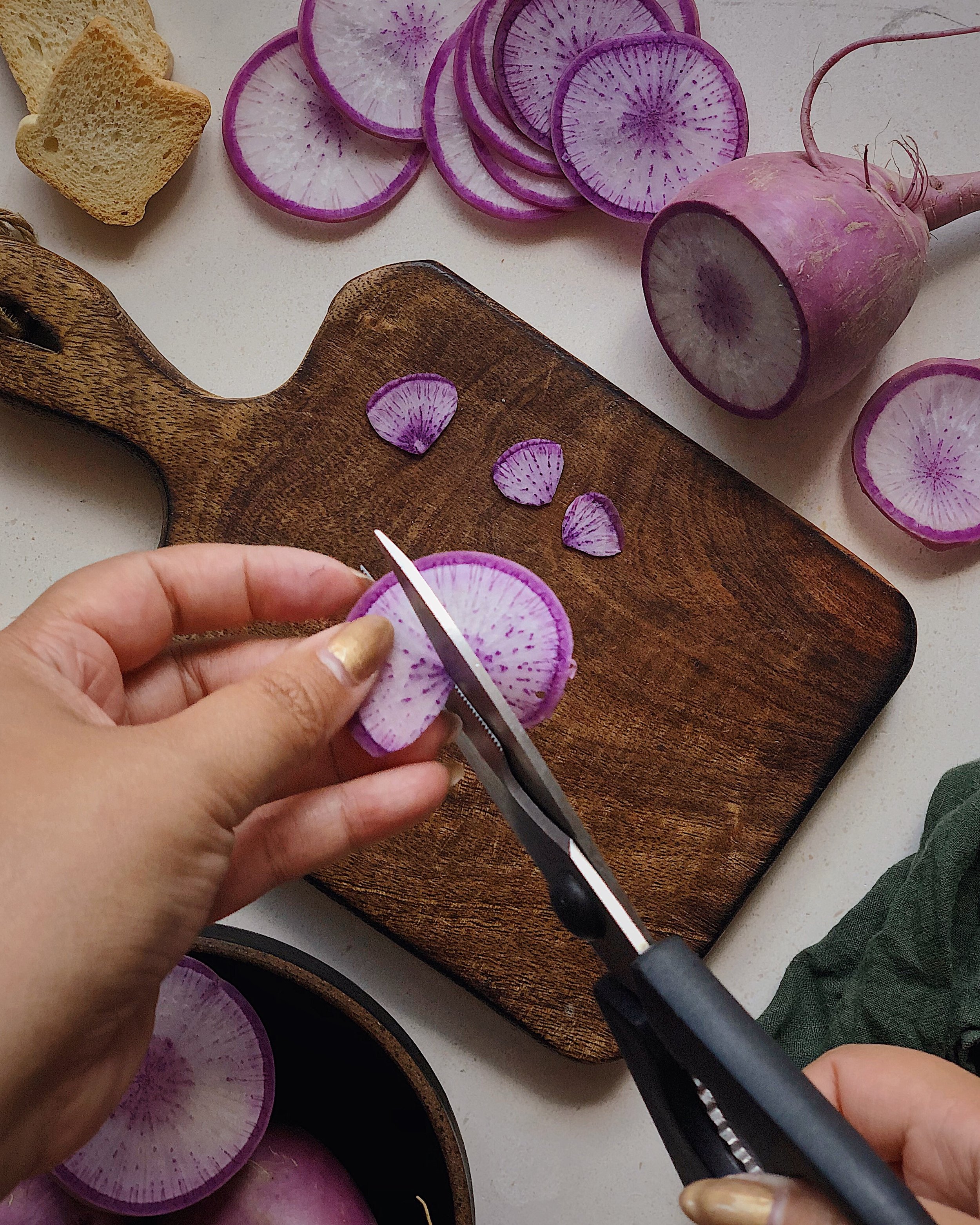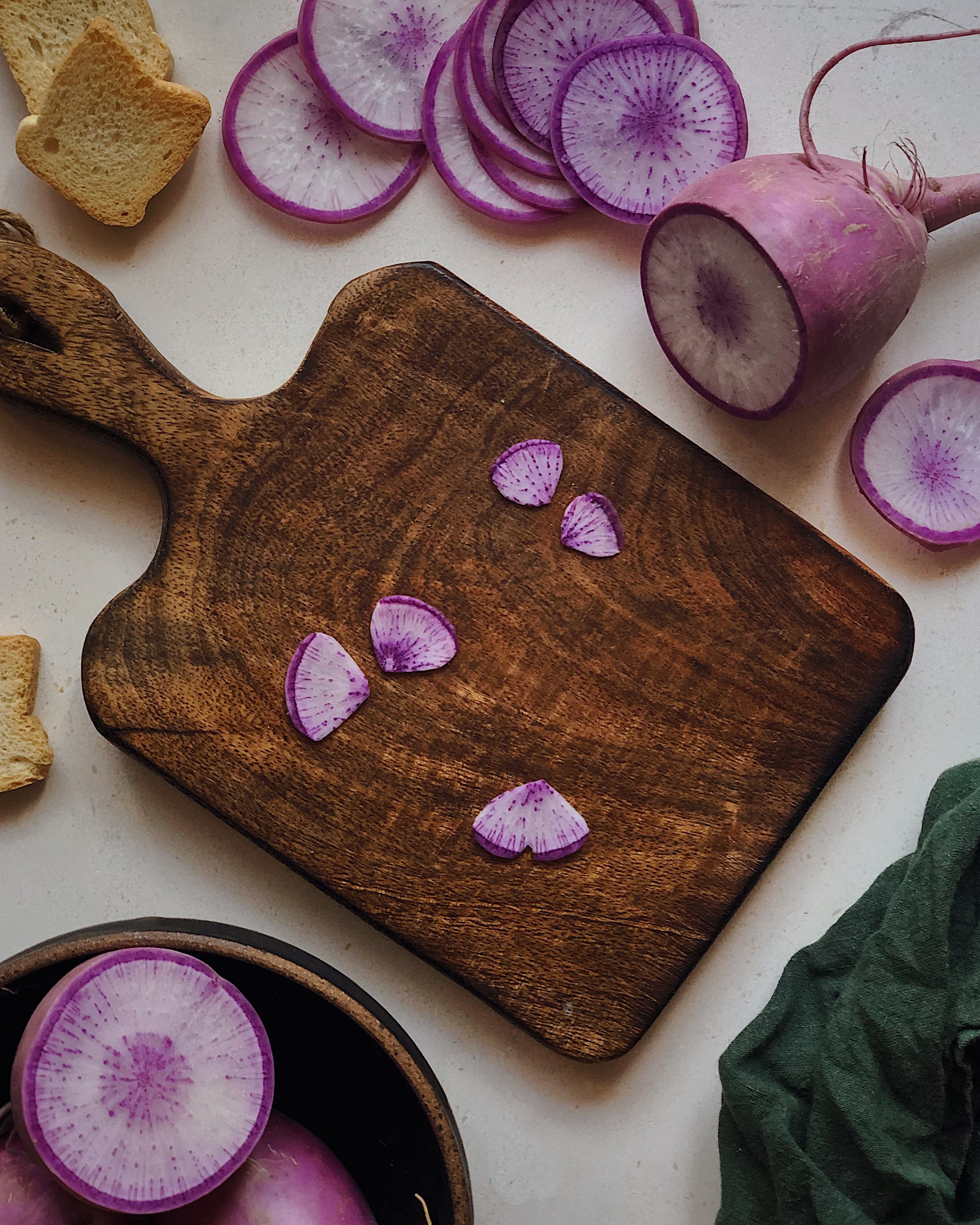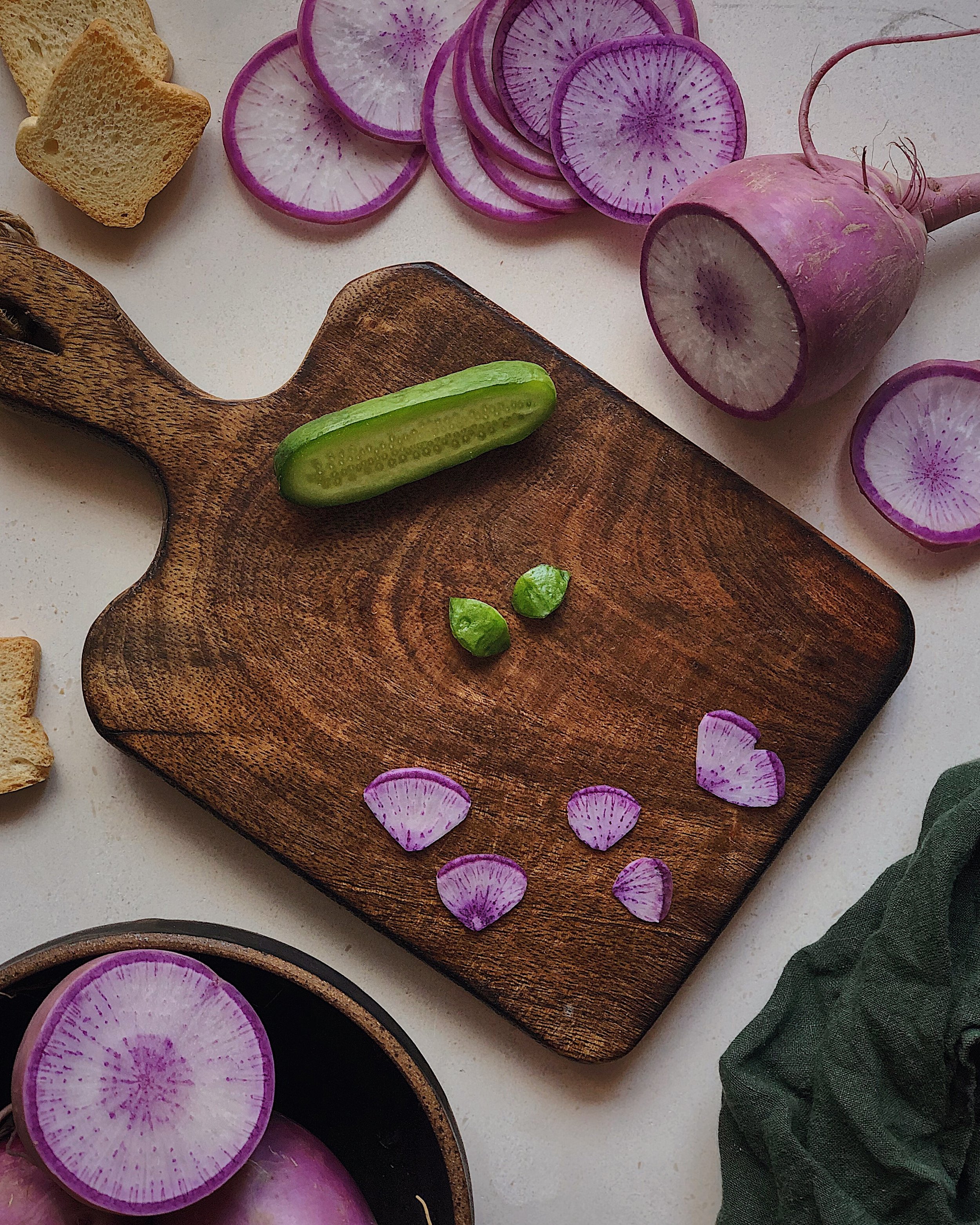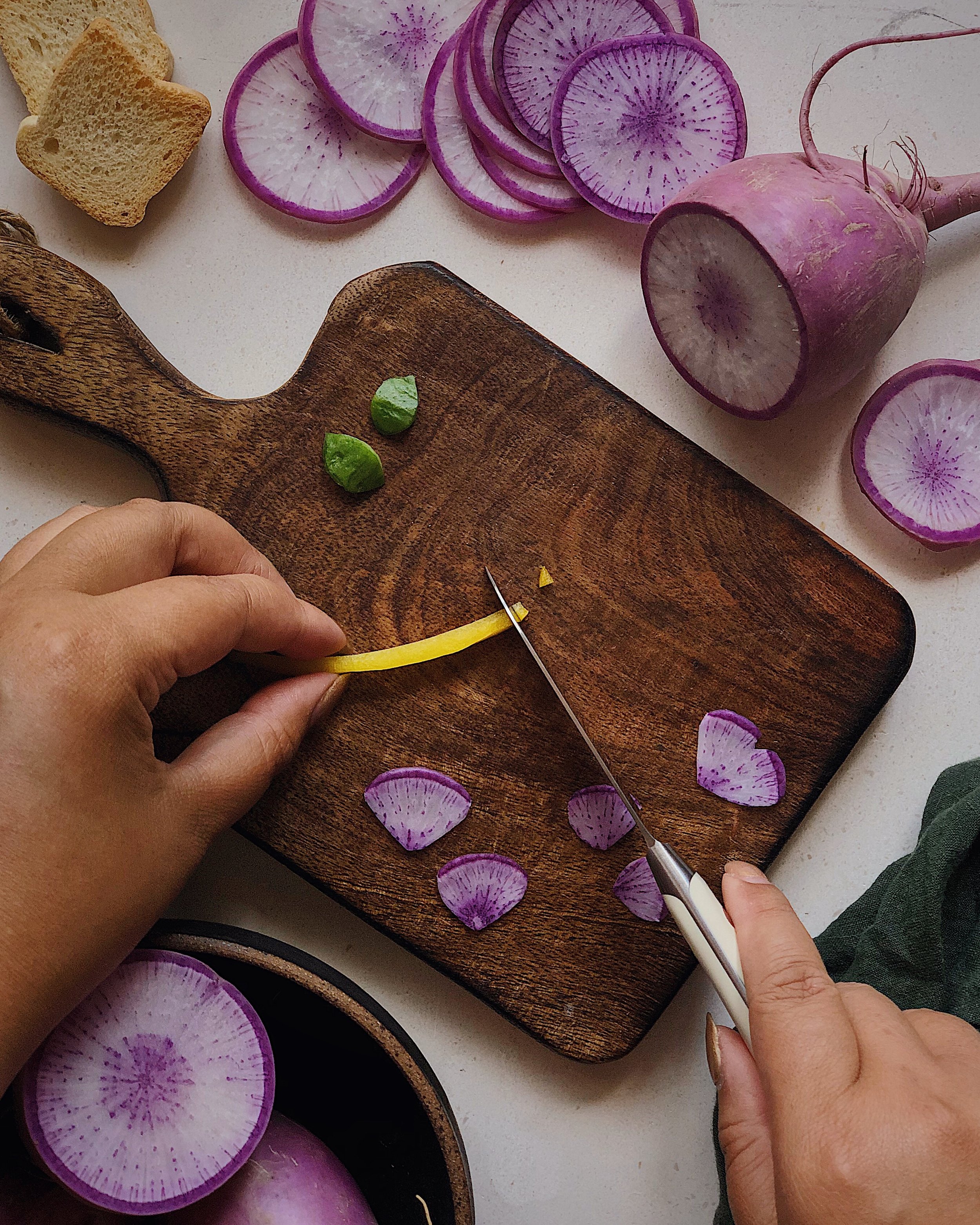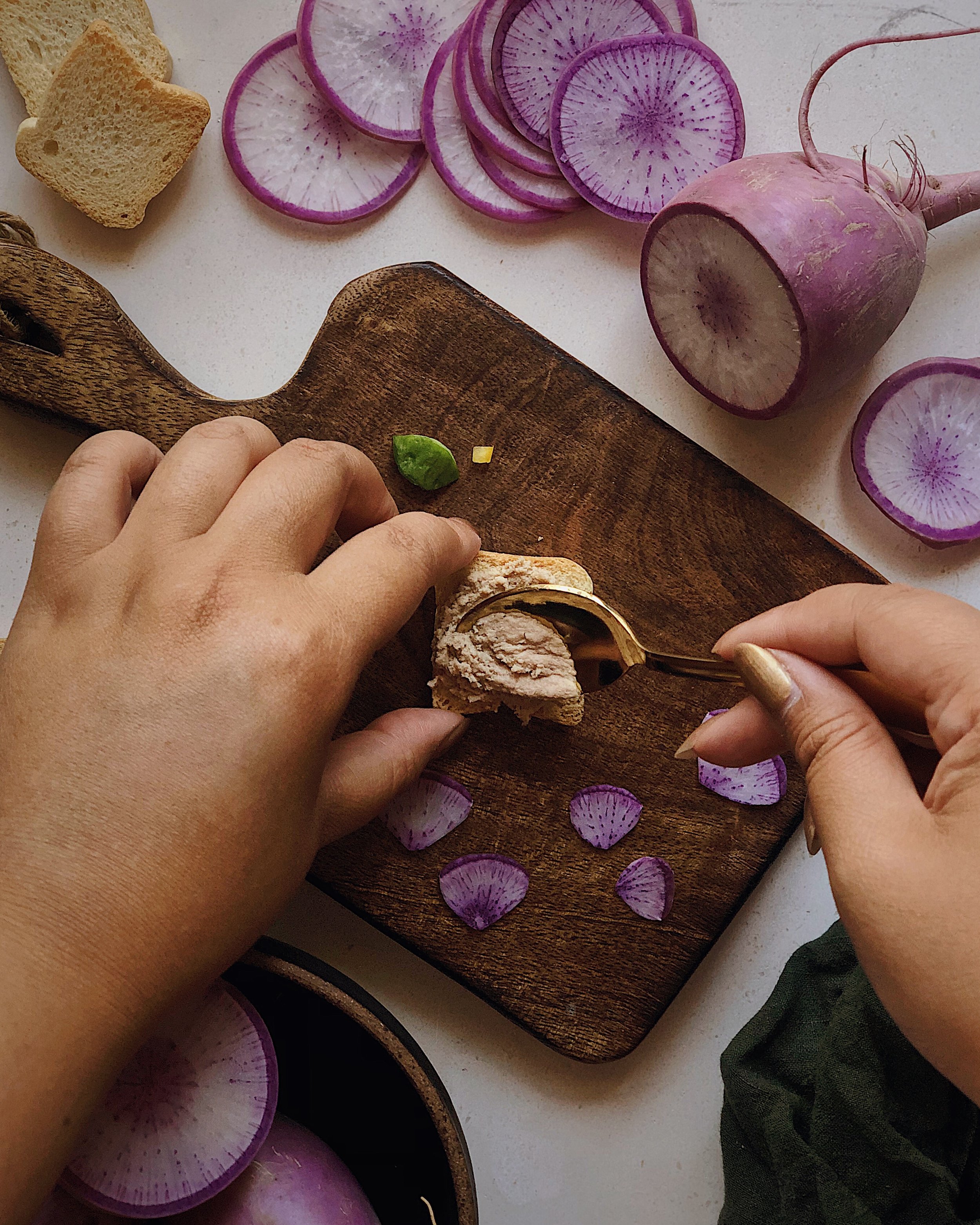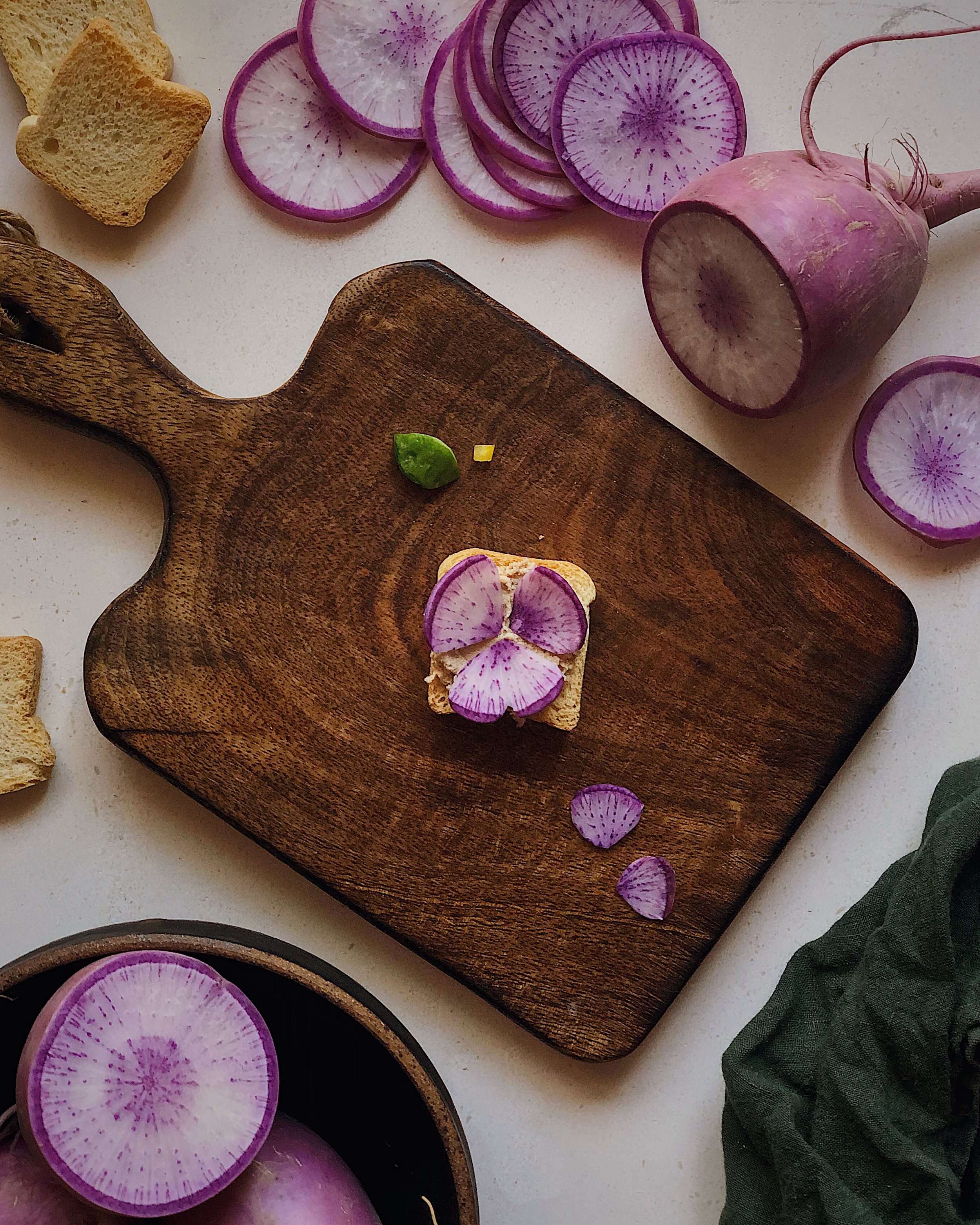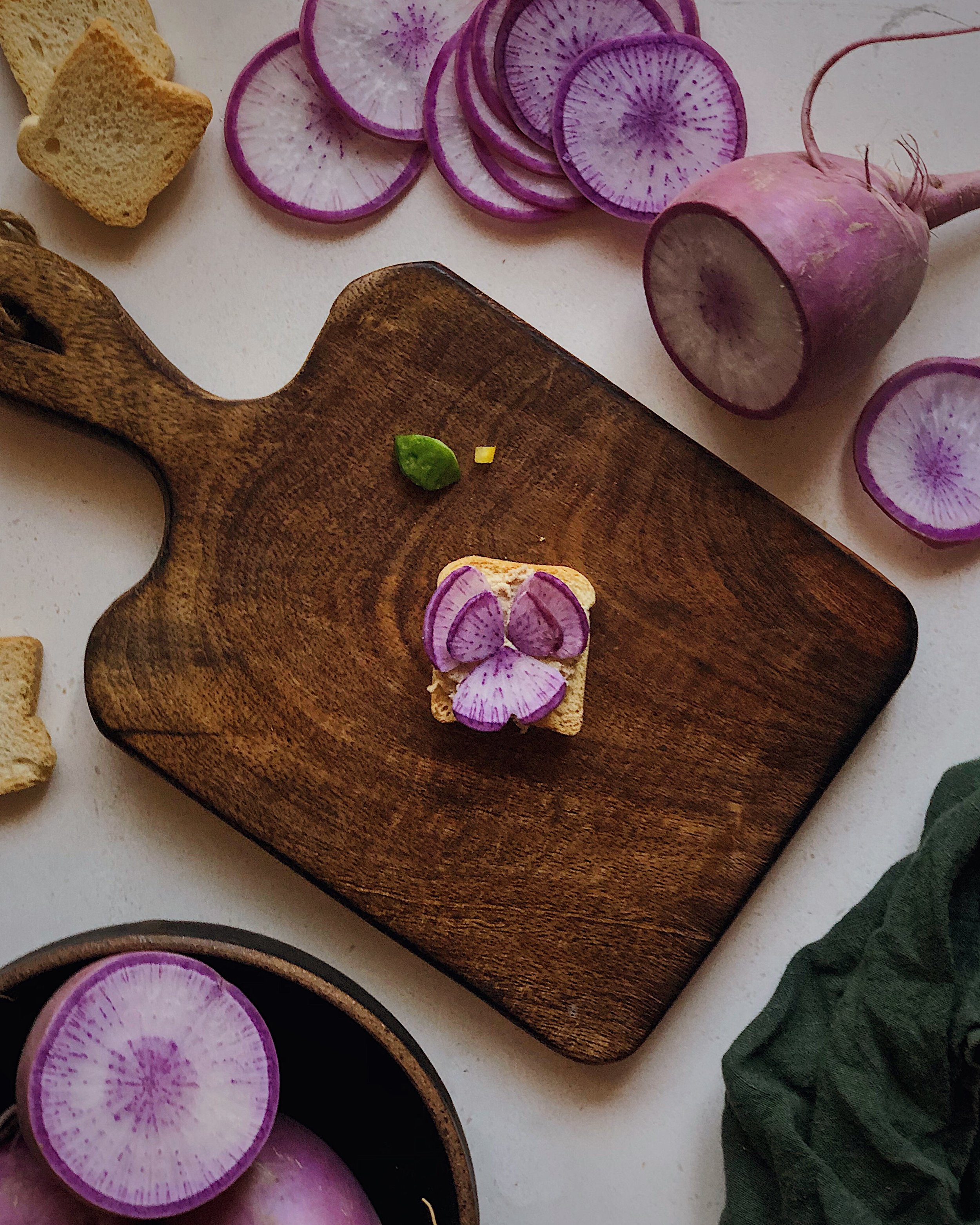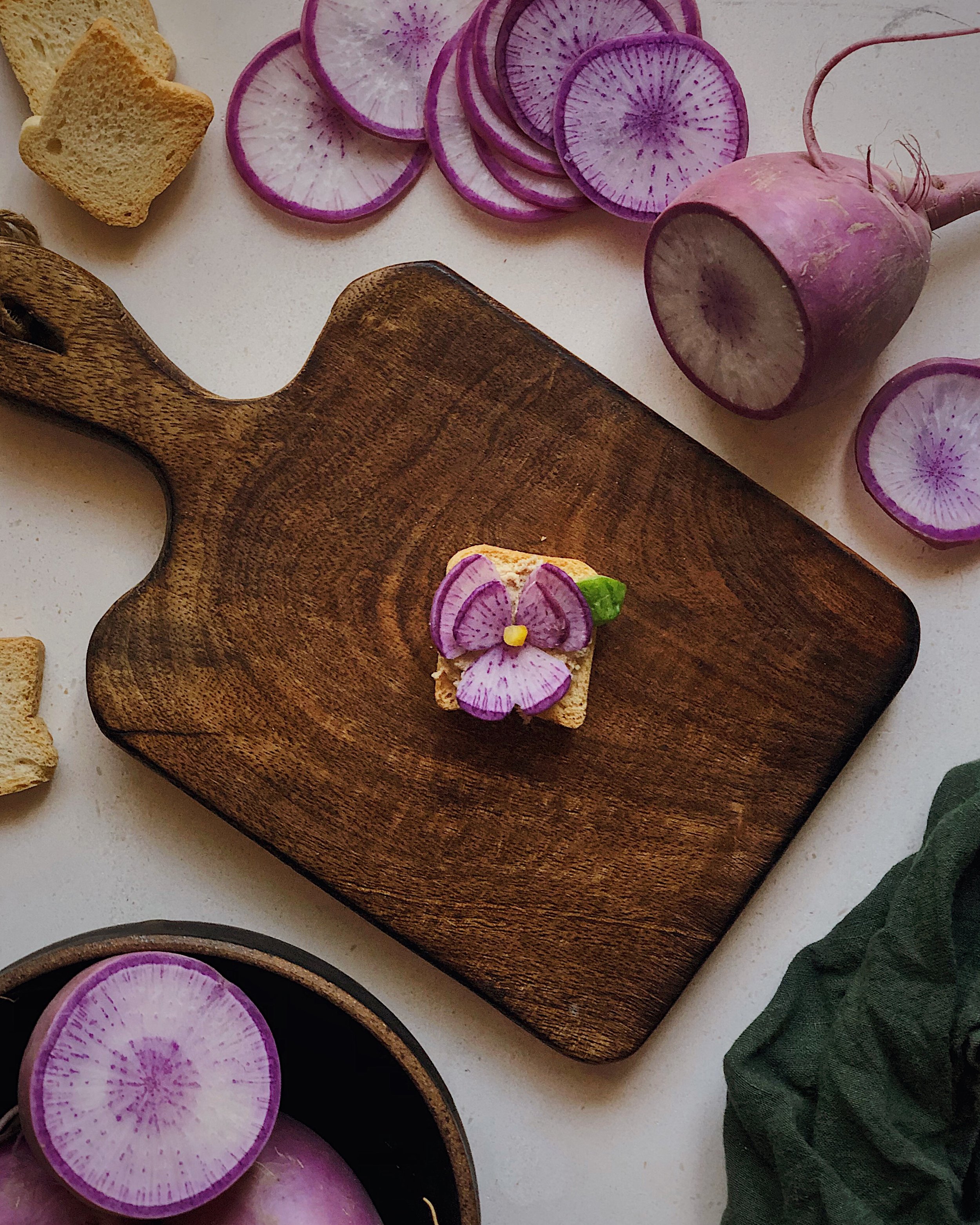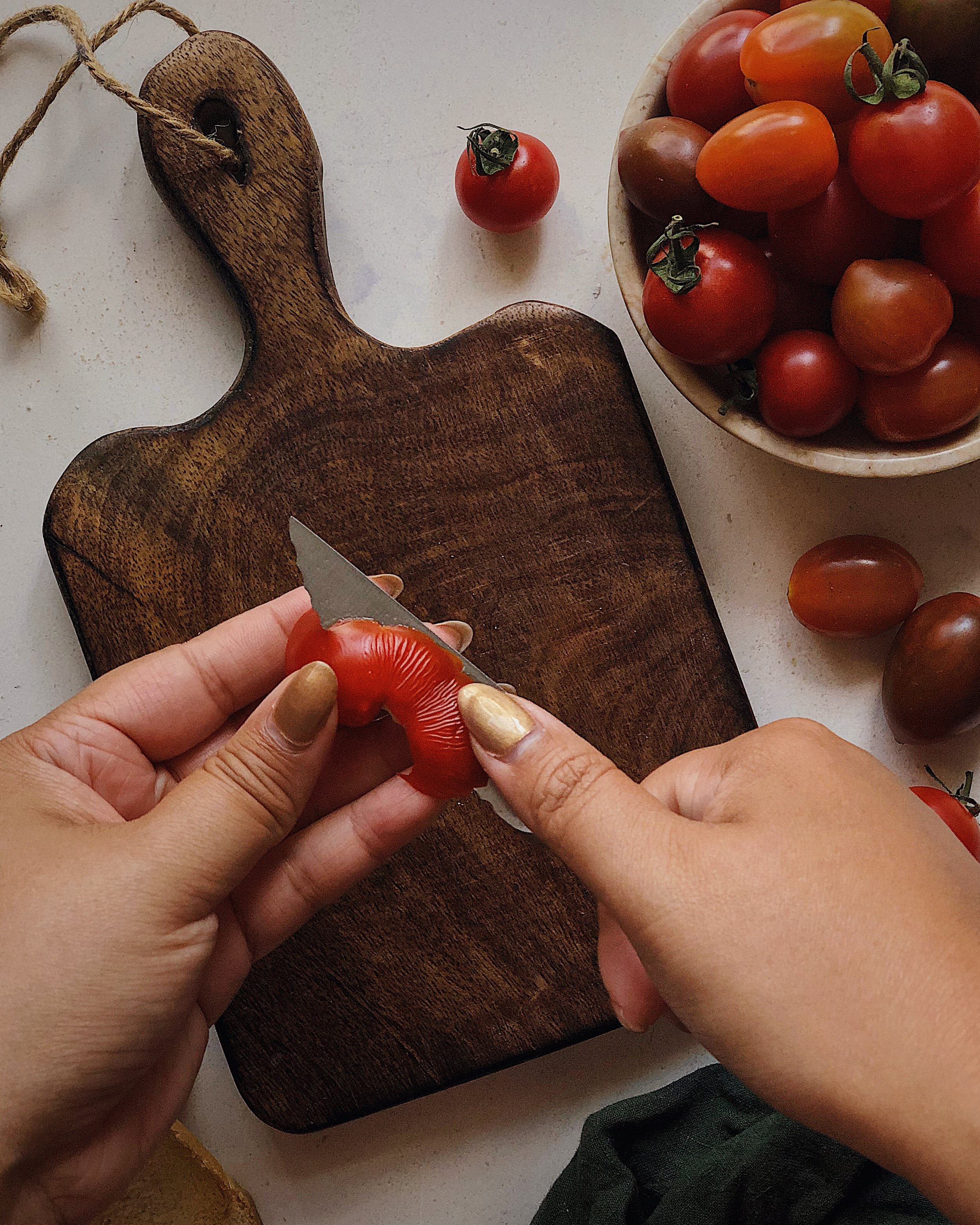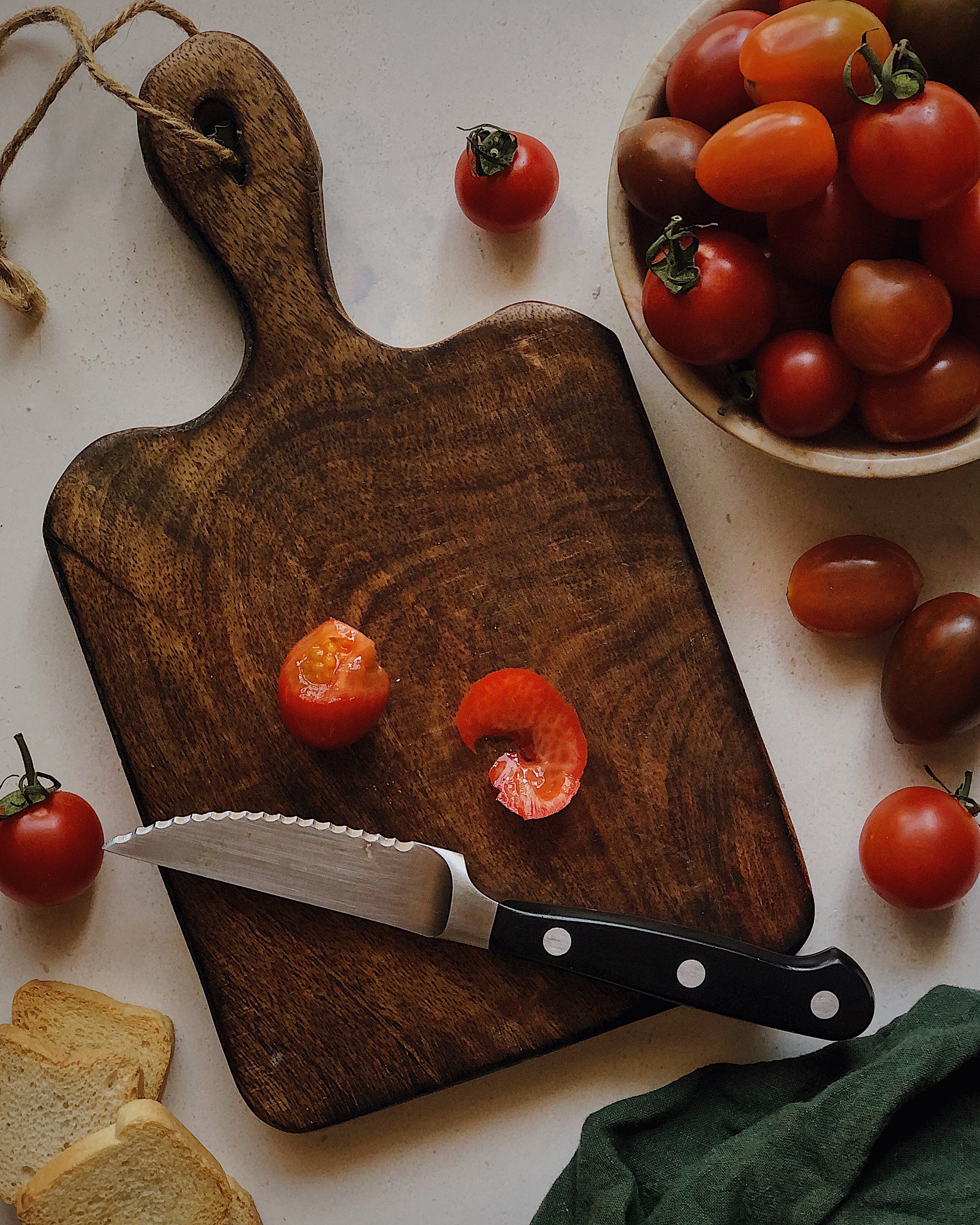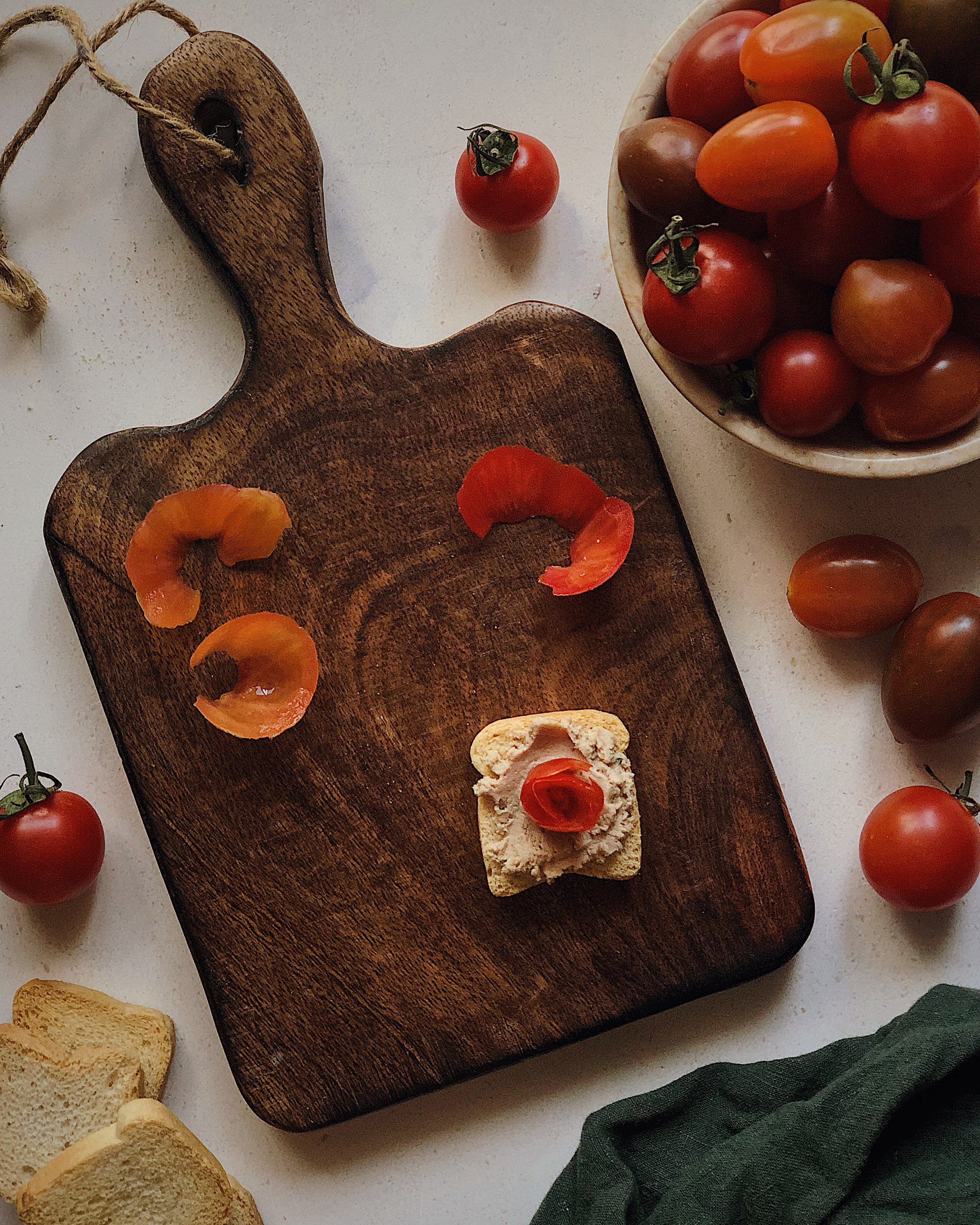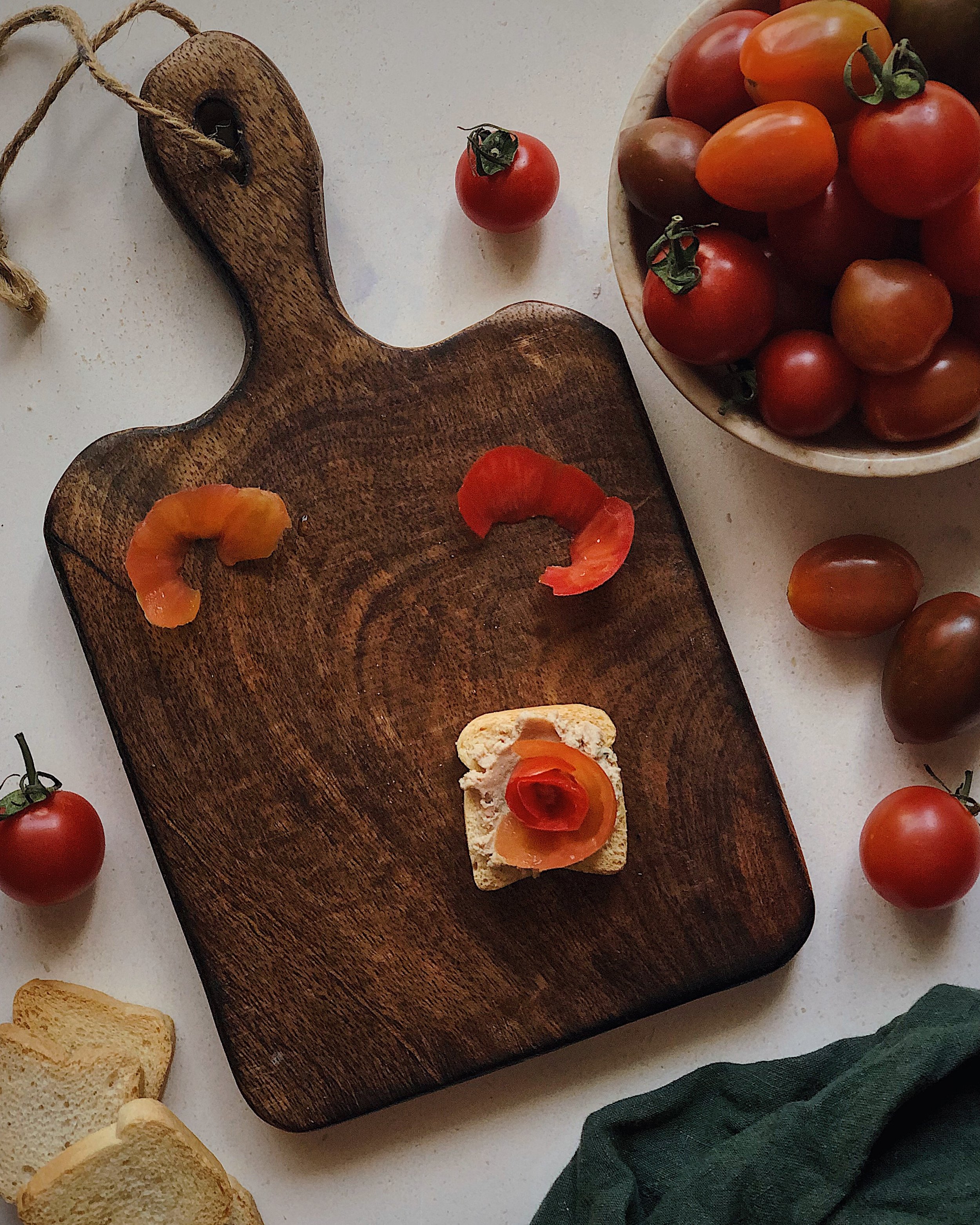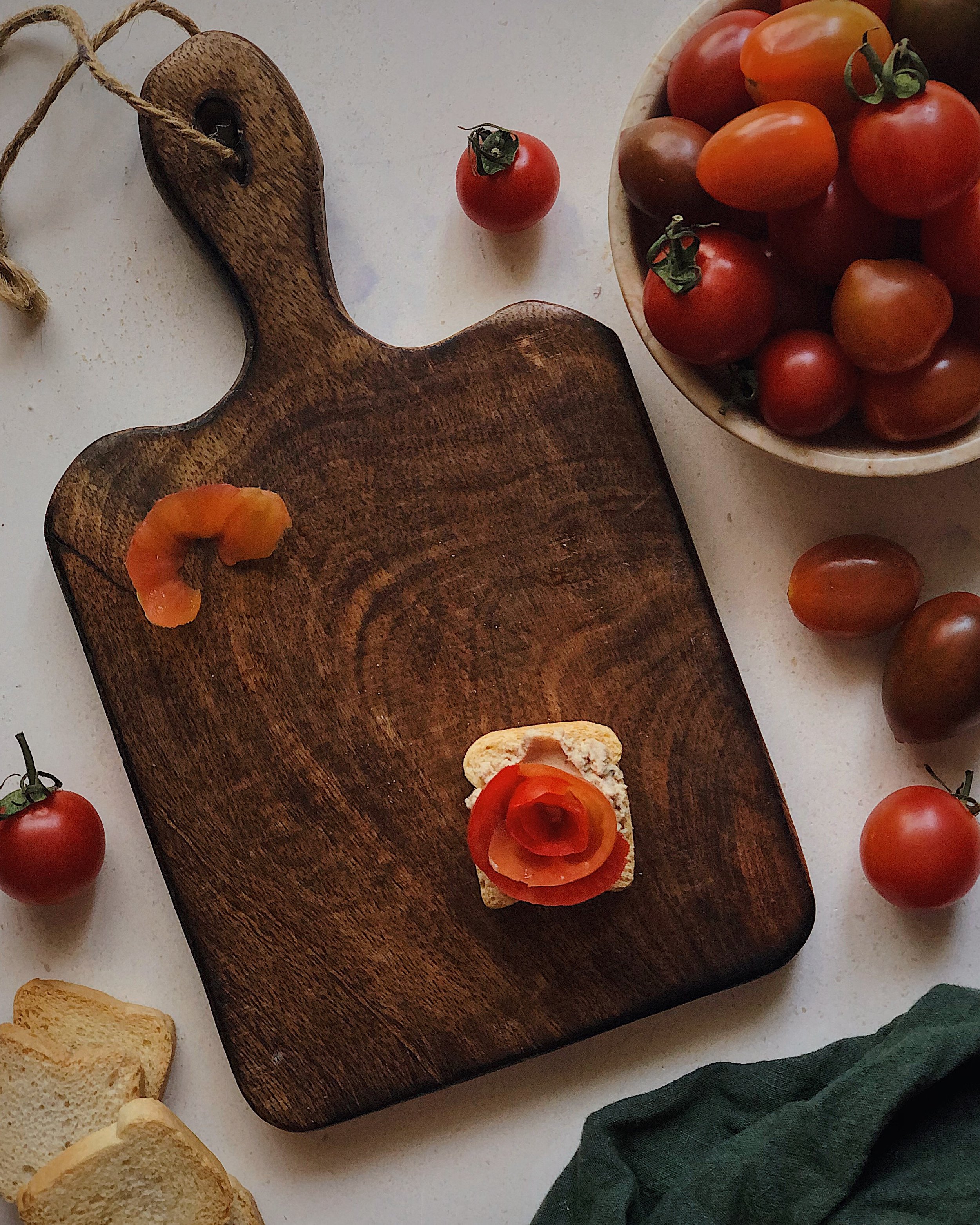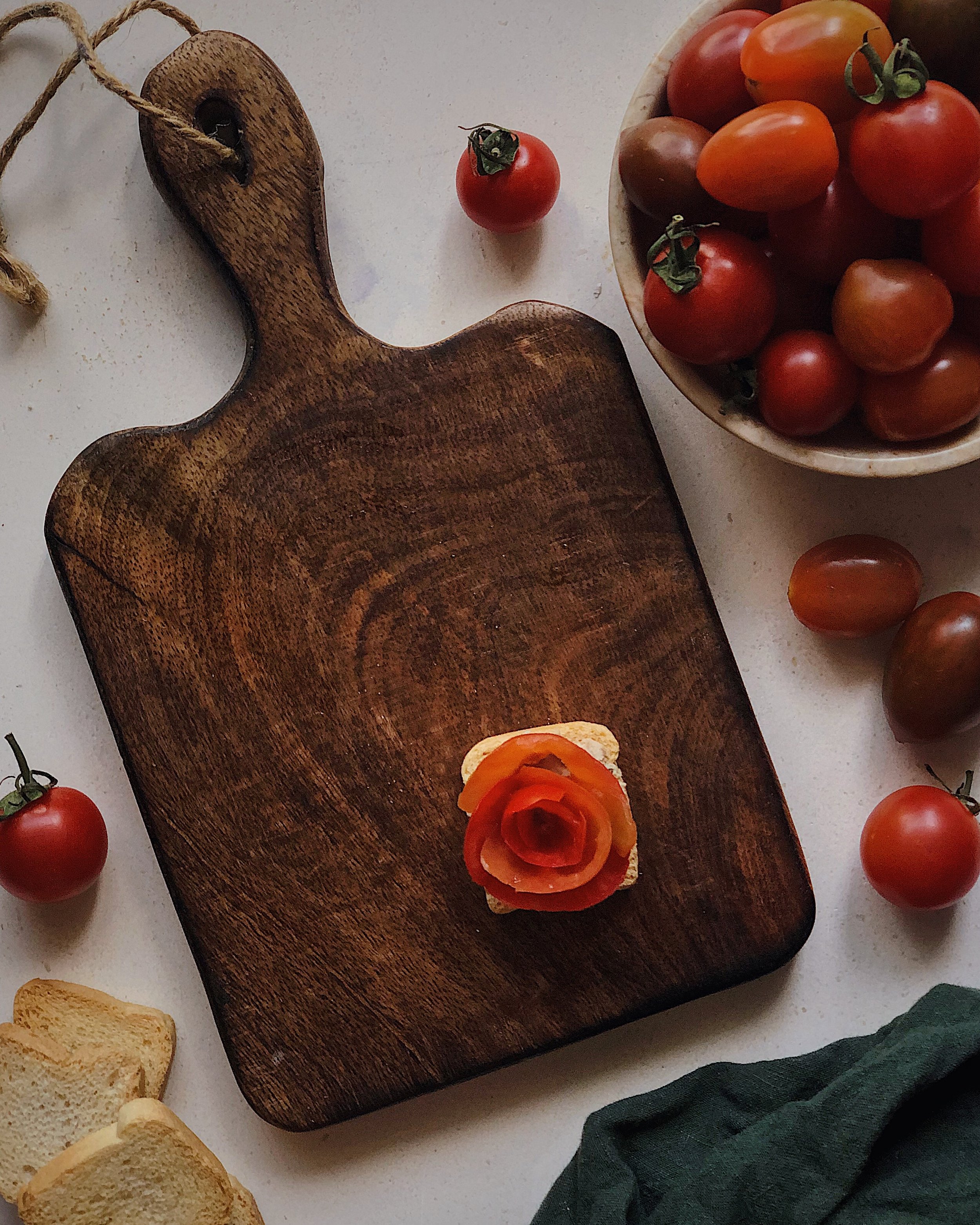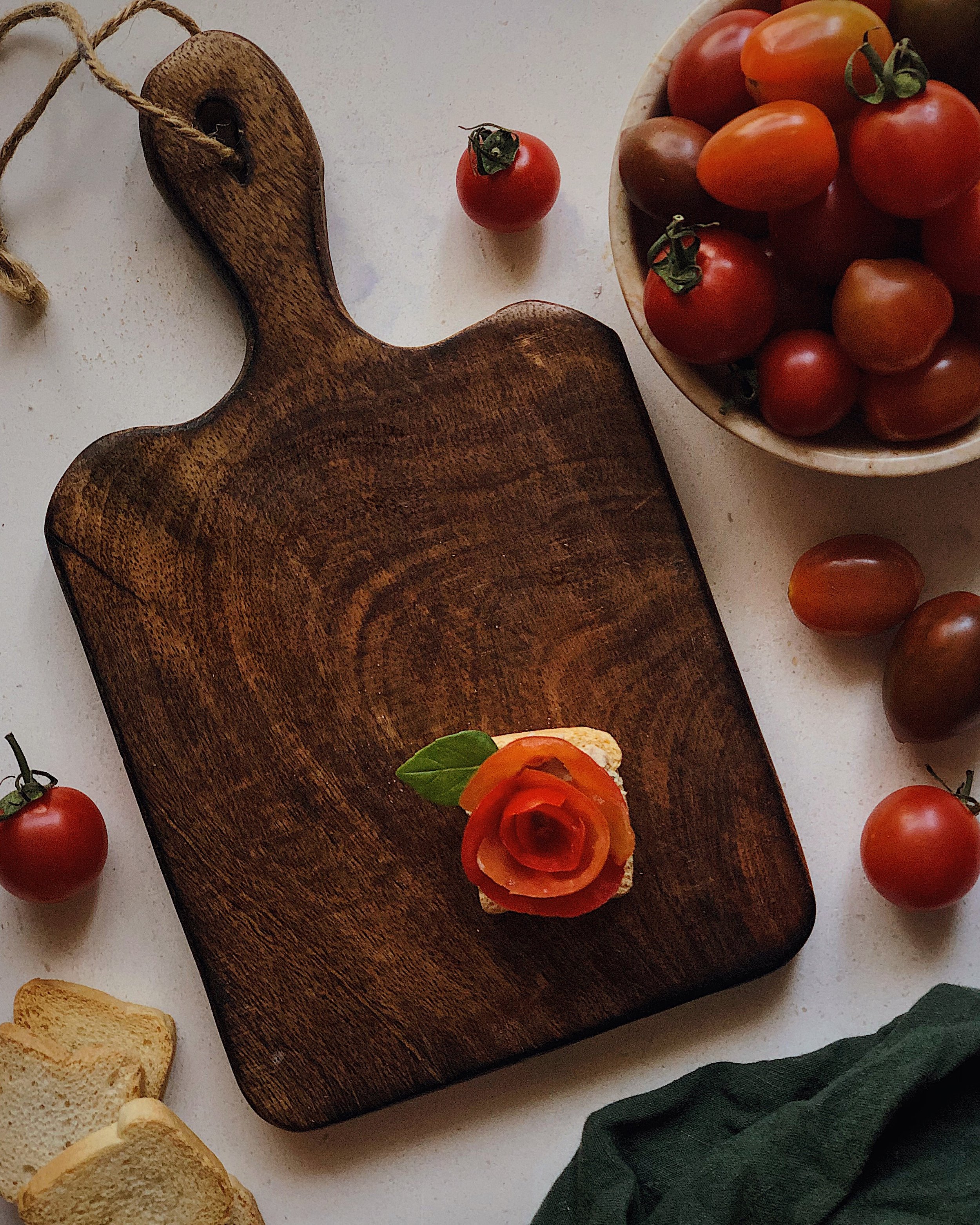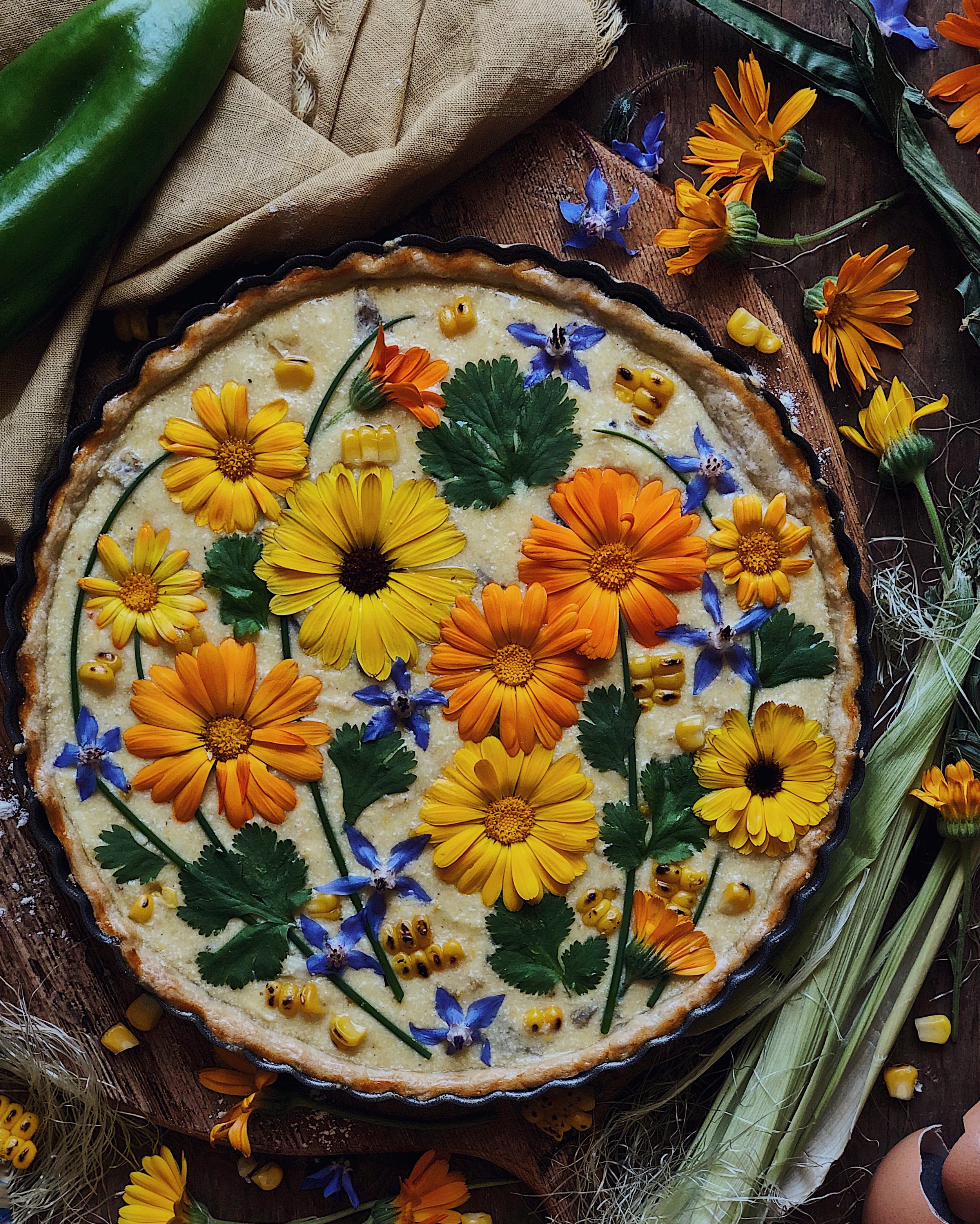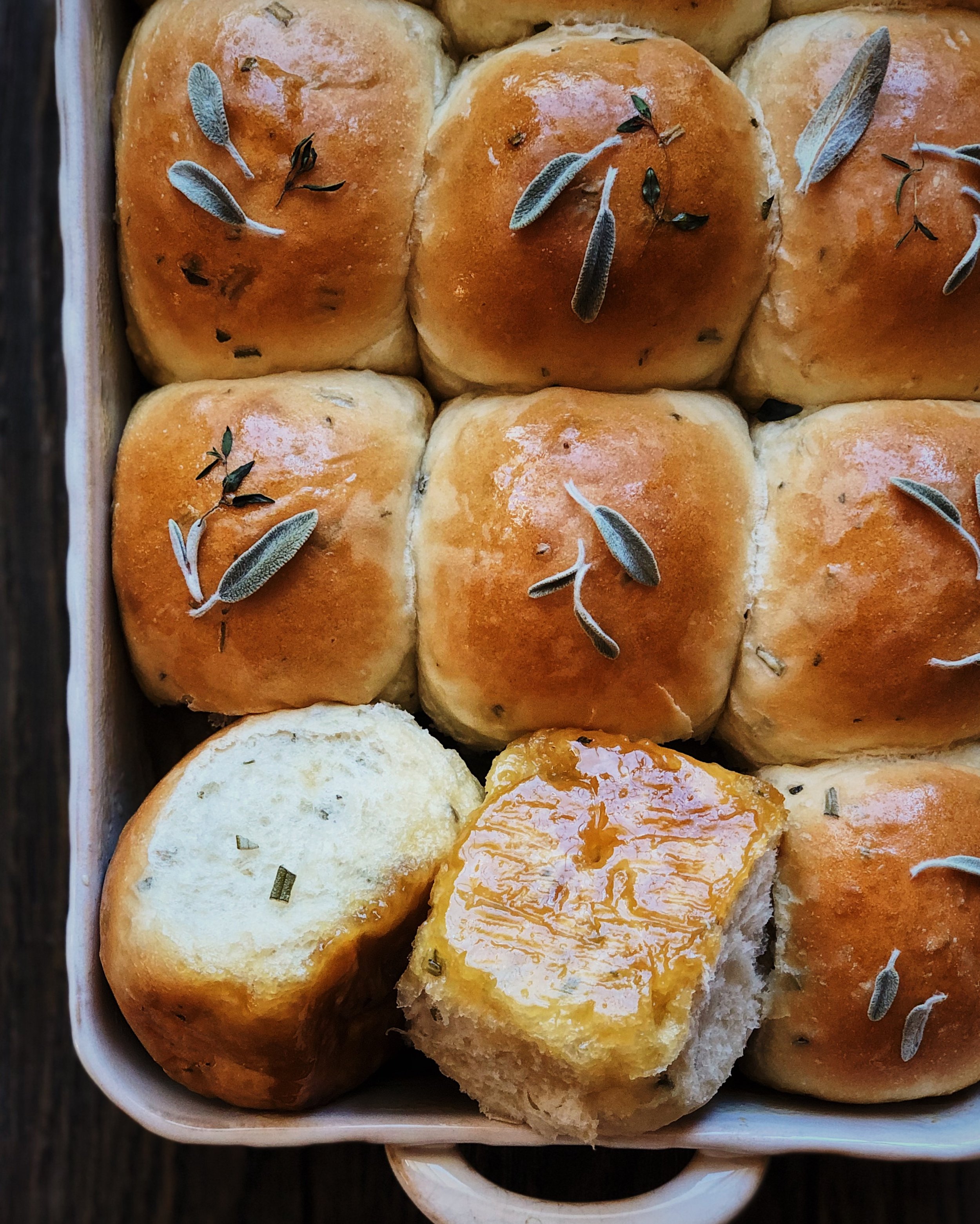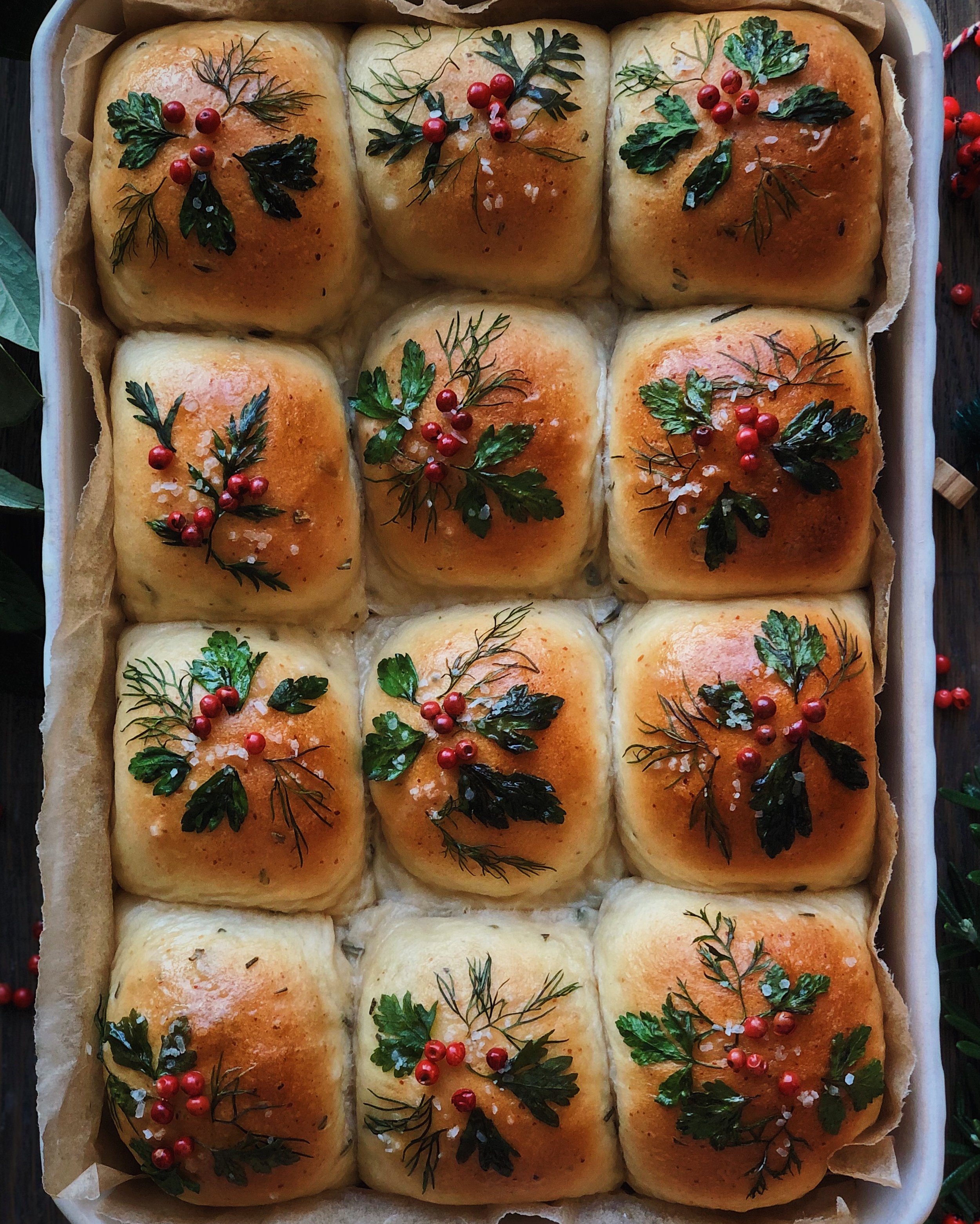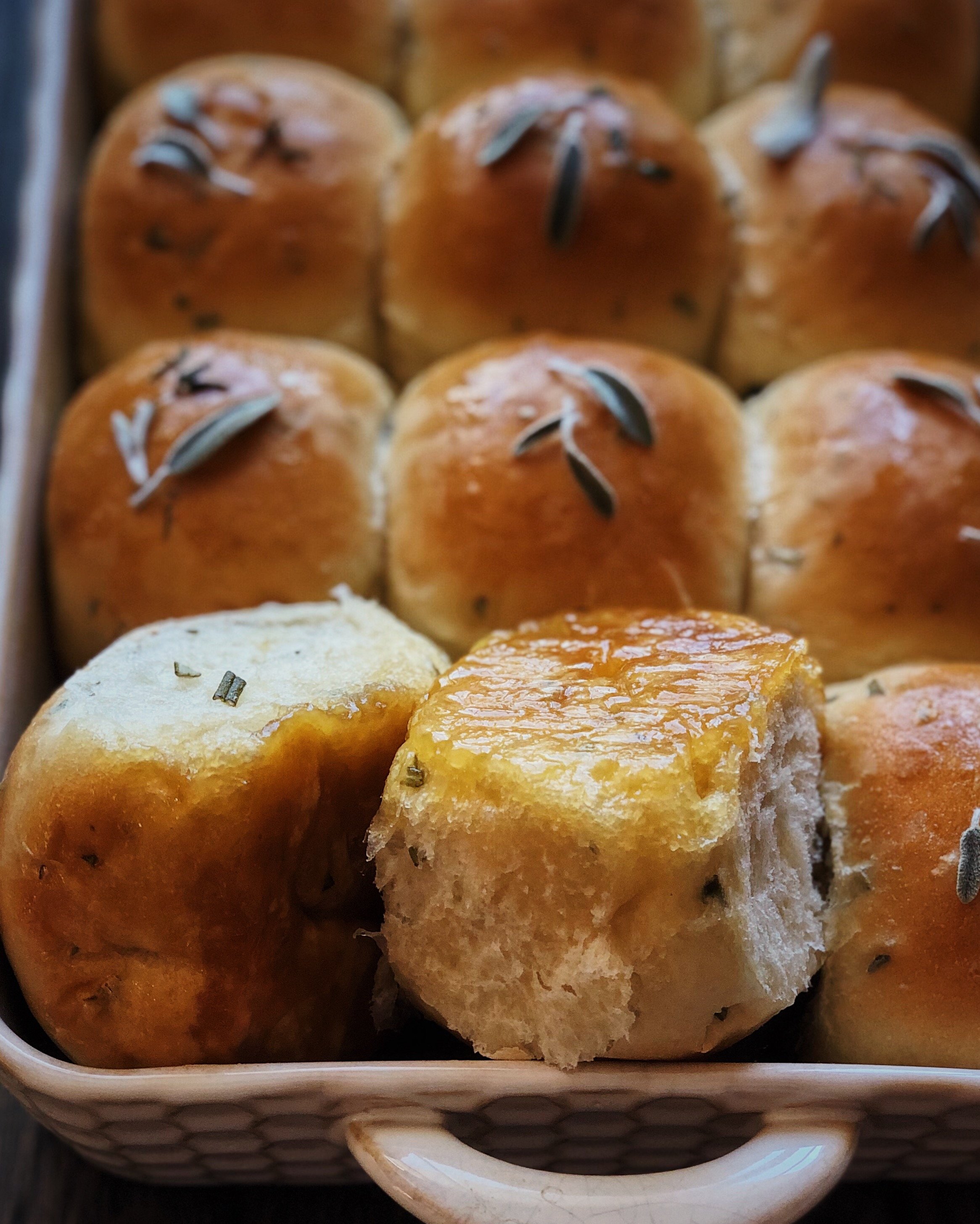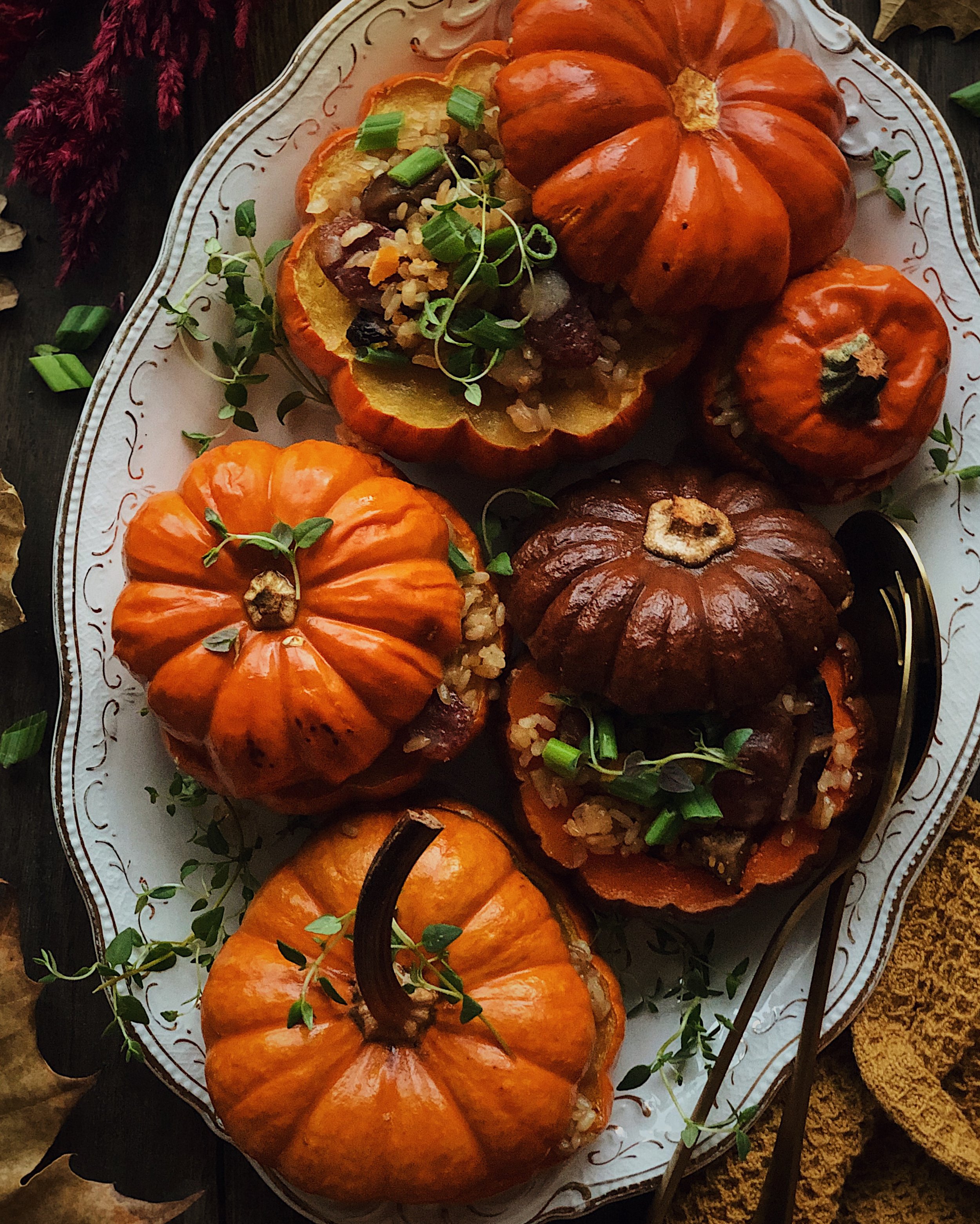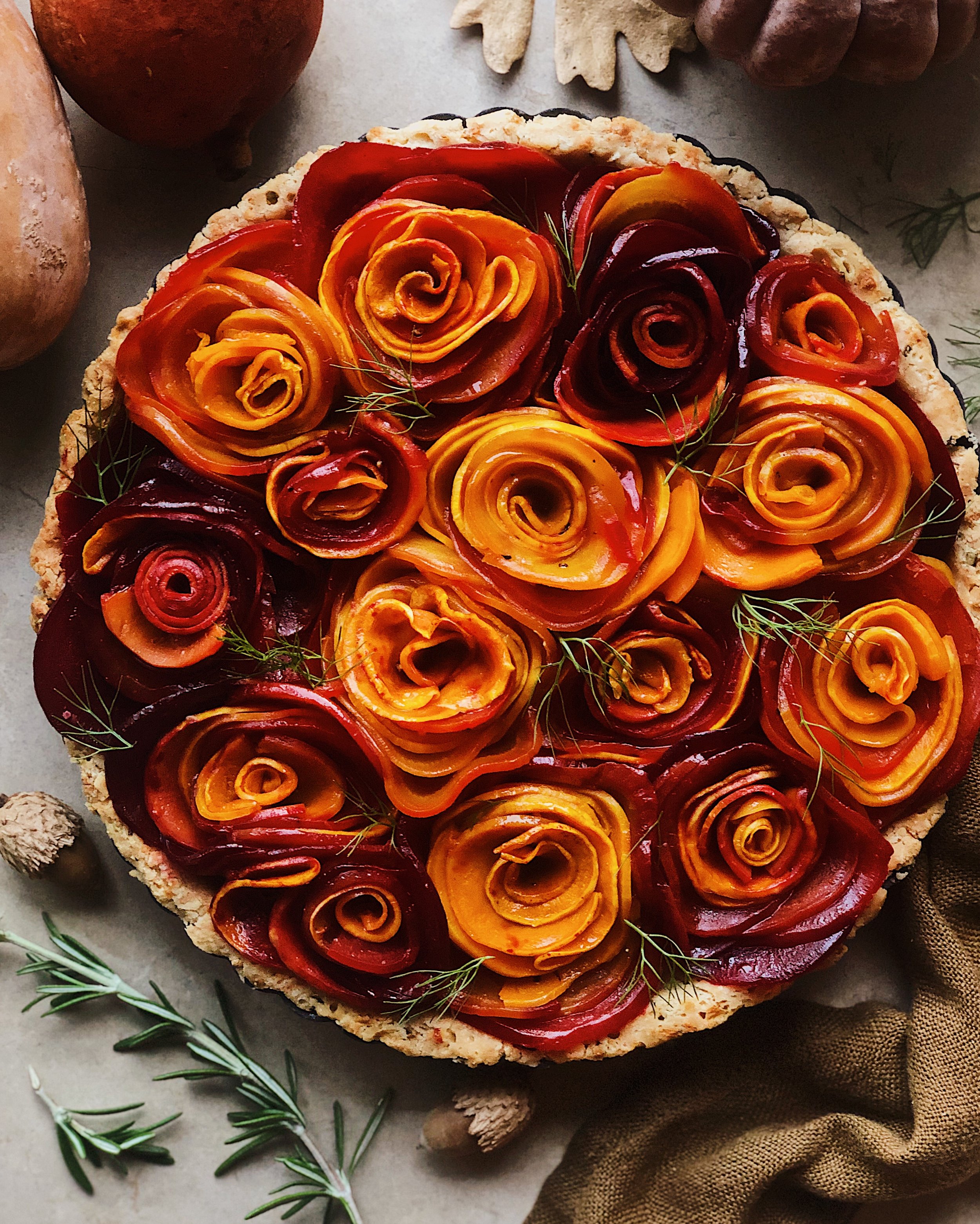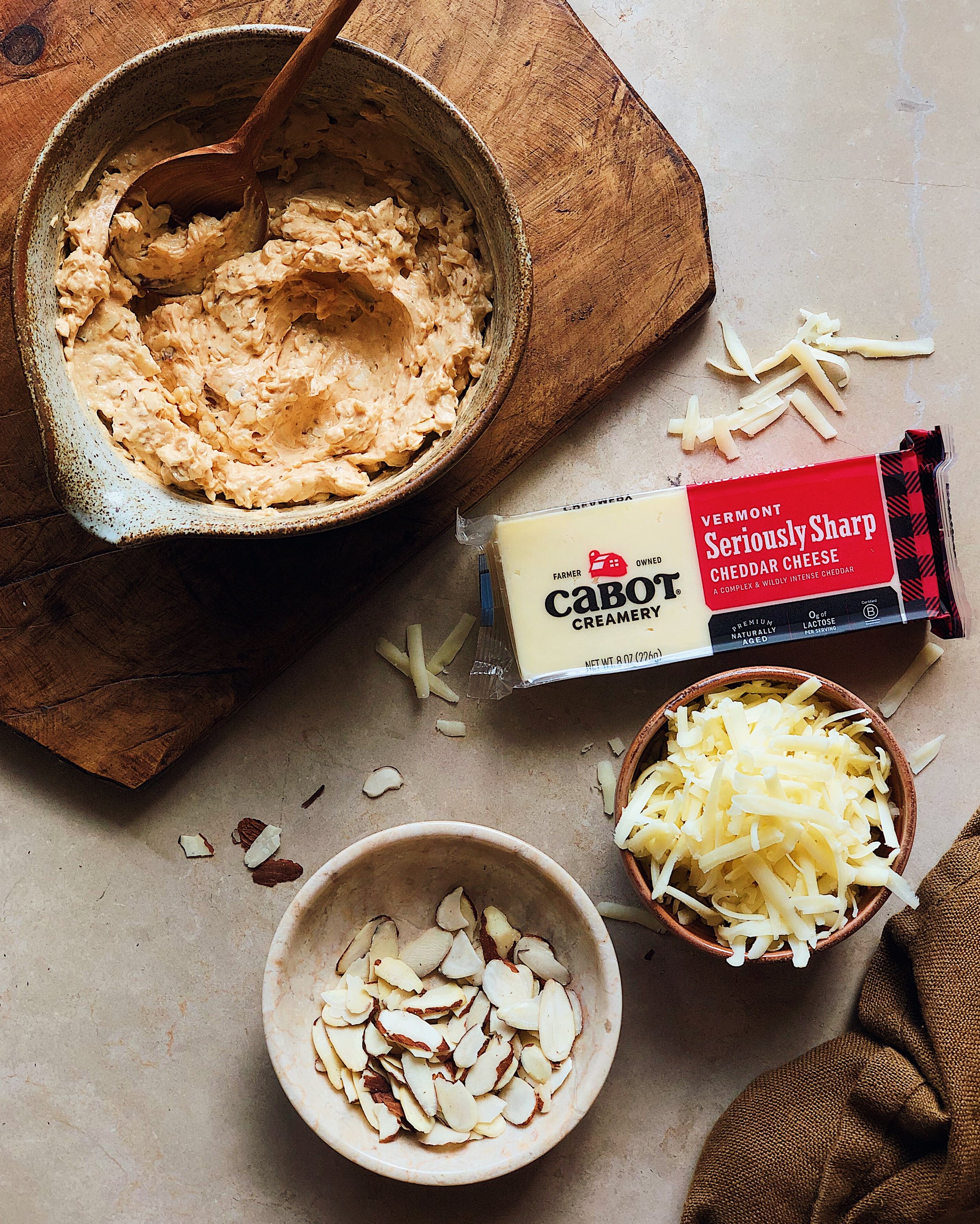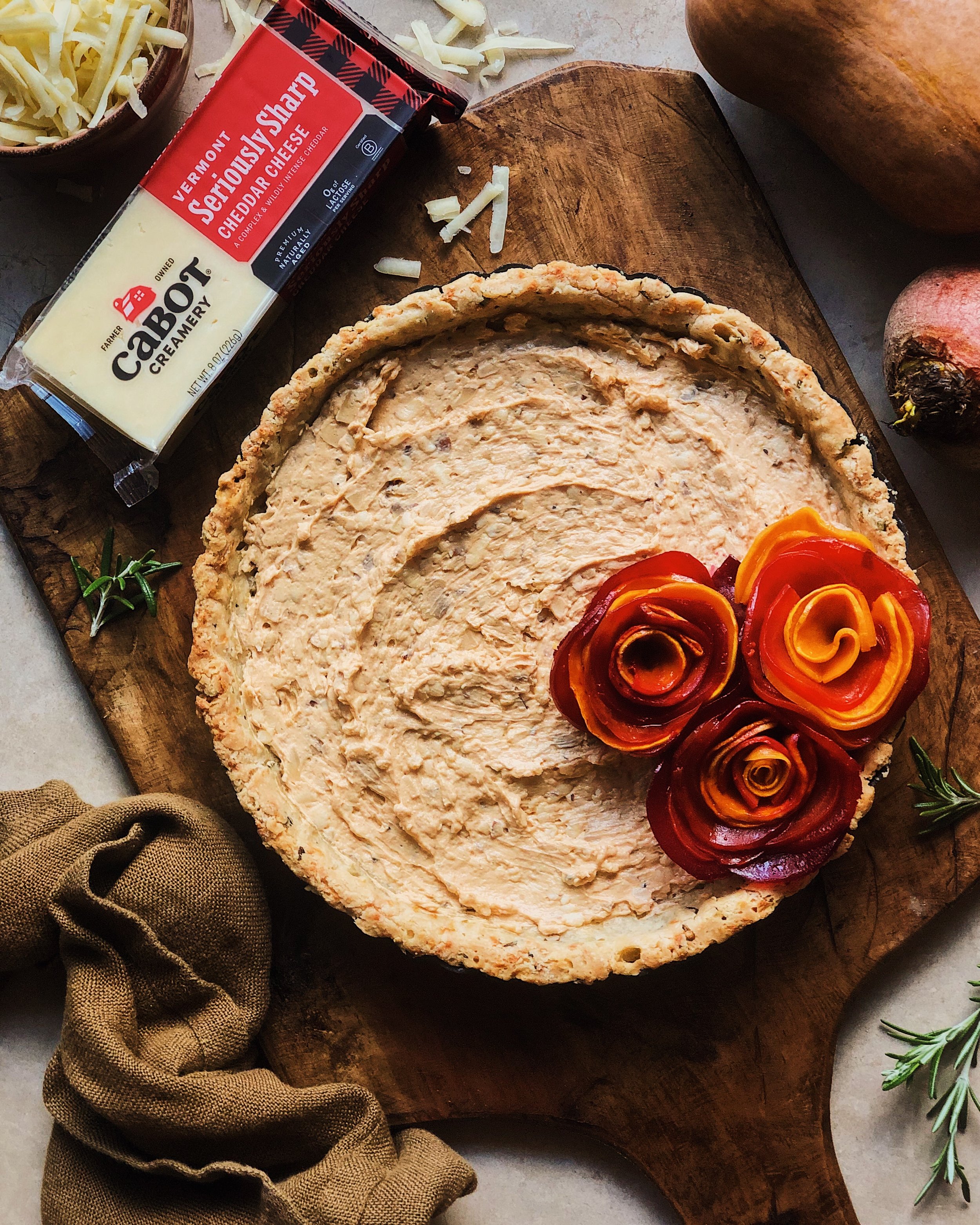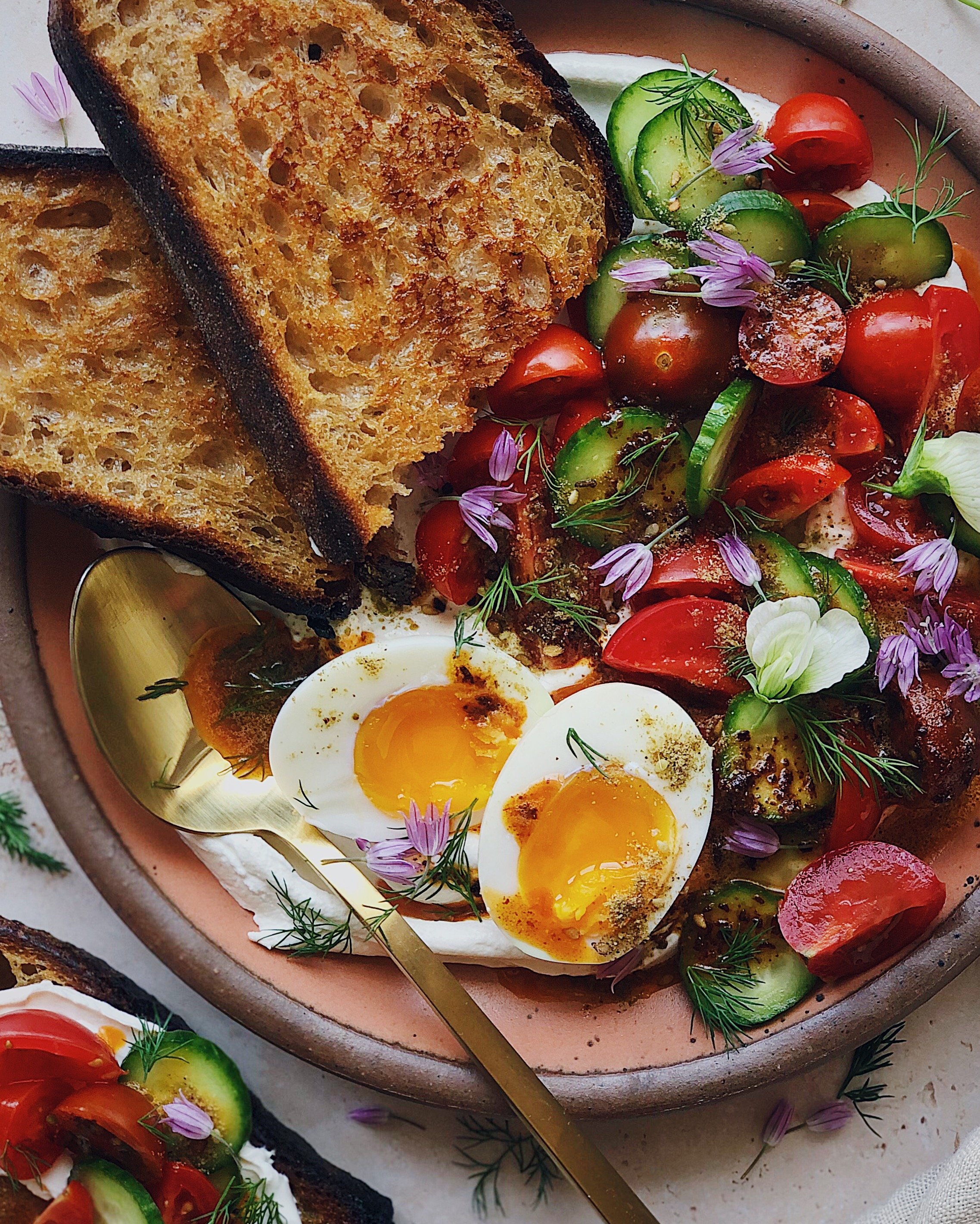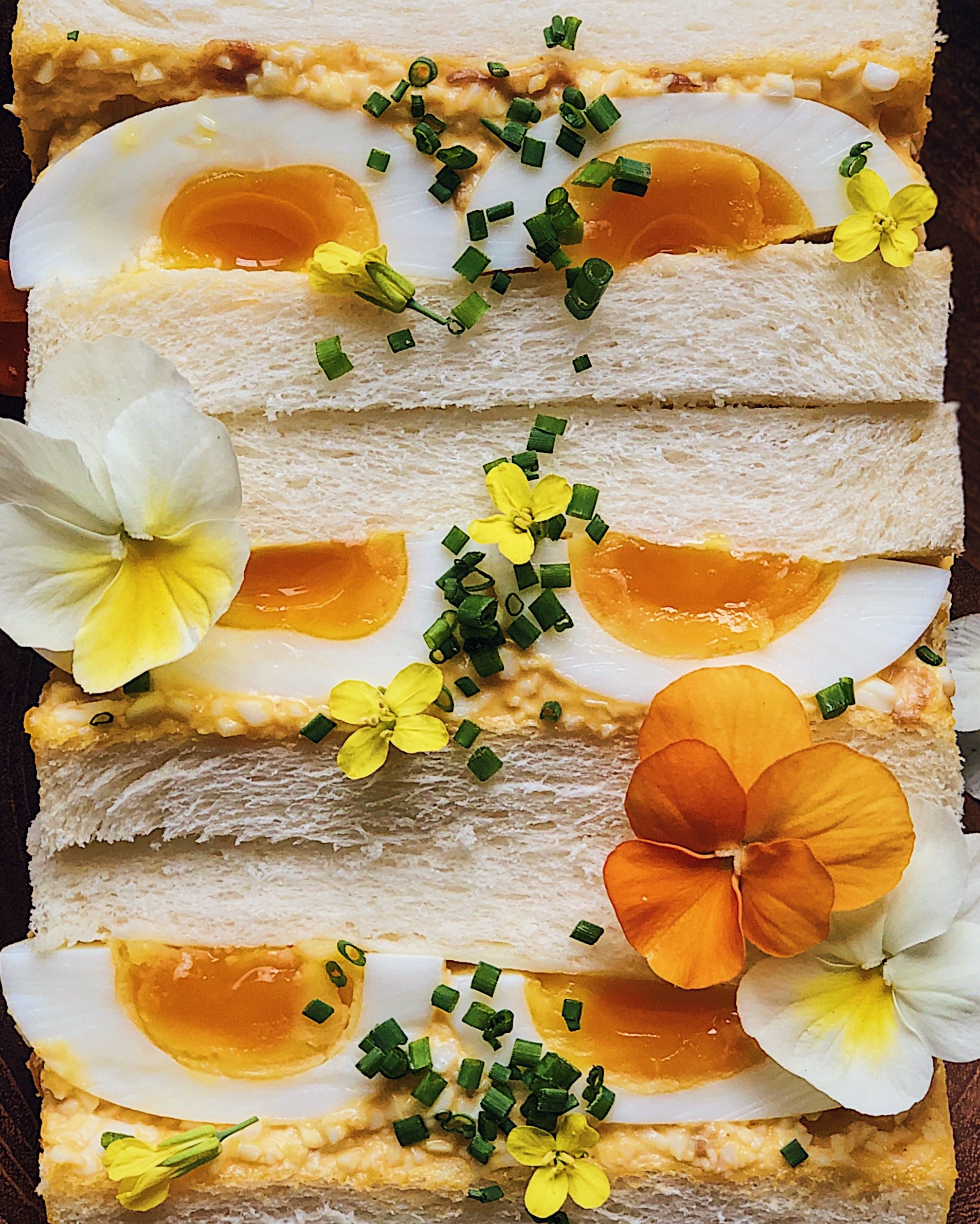Recipe: Cheesy Curry Burger Buns (Small Batch)
/This small batch burger bun recipe is for small households that don’t typically plan on eating burgers for more than half of the week. It makes four buns, so it is great for a small(?) family of four having a burger night together, but is really perfect for a household of just two, like mine, and I will explain why in a moment.
One of the things that I find very odd/annoying/puzzling is that it is impossible to buy a small package of hamburger buns from the grocery store. They almost always come in packages of 8, or at the very minimum, if I’m lucky, a fancy package of 6 brioche buns. Were hamburgers exclusively a party food at some point? I think it’s been quite a long time since families of 2 parents + 6 children were a common household size, so why so many? Is it possible that typical American families are eating burgers for dinner every day (something my Chinese-American brain can’t even imagine)? I’m not here to judge if you do, but I am saying that personally, there have been so many times I have been put off from planning a fun Friday burger night at home with just me and Spouse because I don’t want to buy an 8-pack of burgers and be stuck not knowing what to do with the remaining 6.
I am very adverse to food waste, so somehow it makes more sense to me to go through the time and effort of making my own small batch of burger buns from scratch than it does to get forced into buying too many from the store.
If you are like me, then this recipe is for you. And if you are like me, then you probably are also aware that that extra time and effort of making your own dough and baking your own buns comes with a much bigger payoff than just avoiding food waste—it in fact comes with the added pure joy of your home smelling amazing as the dough bakes and the satisfaction that eating delicious homemade bread can bring.
This recipe is perfect for households of two like mine because it means you have a pair of buns to eat when they are soft and fluffy and still warm from the oven, and then a pair to use for burgers. These buns have cheddar cheese and Japanese curry powder baked right in to them so they are plenty flavorful on their own and absolutely wonderful as snacking buns. Then you have the remaining pair of buns to use for burgers the next day, at which point they have had time to firm up slightly and develop the ability to function as perfect burger buns. Another thing that really annoys me is so many hamburger buns, from stores or at restaurants, just completely disintegrate when put to the task of actually being used to hold a burger patty and fillings. Other than just being delicious homemade buns, I am super proud of this recipe because of how successful these next-day buns were at actually keeping together the half-pound burgers I made with them.
Some Notes about ingredients for these cheesy curry flavored buns
Active dry yeast: Active dry yeast needs to be activated in some sugar and warm water before use, as opposed to “instant” yeast which you can typically dump into your bowl with other dry ingredients. I always activated my instant yeast anyway as a good practice to make sure my yeast was still alive before using; I’ve accidentally used older yeast in the past without testing and my dough took 4x the estimated time to rise, even on a warm day. Since I am going through the process anyway, I started to use active dry yeast to be a little more old-school and I have been really happy with my bakes after making the switch. But you can definitely sub instant yeast if that’s what you have.
Cheddar cheese: I wanted these buns to be flavorful and not just plain vessels for my burgers. Cheddar cheese, grated with the smallest holes of your grater (or one you’d typically use for parmesan on pasta) adds real depth to the buns and I think it helps with the structure too. Parmesan, romano, or asiago would also be good options here.
Curry powder: I decided to amp up the flavor even more by adding some Japanese curry powder to my buns. There are a lot of other hamburger bun recipes out there and I wanted mine to be really unique, and I just love baking curry flavored things. Plus I think the flavor of the curry powder goes really well with the cheddar. Japanese curry is very mild, so these buns aren’t spicy. If you do not have Japanese curry powder or are not as interested in your buns packing such a punch of flavor, please feel free to omit this ingredient (but don’t skip the cheese!)
Half an egg?: This small batch dough recipe only requires half of an egg, and the other half gets used for the eggwash, to give the buns a nice golden brown shine as they bake. First you just need to beat the egg to a homogenous consistency. Then you can eyeball dividing that egg mixture in half! Contrary to what more traditional baking cookbooks and pastry chefs might tell you, baking does not always have to be crazy precise. Making a dough like this is definitely about feeling; if the dough feels too wet and sticky because you added a touch too much egg, you can always add a pinch or two of flour to balance it out and your buns will be just fine.
This is what the disks of dough looked like right after shaping, before the second proof
This is what they looked like right before I began decorating.
Decorating the buns
You definitely don’t have to decorate the buns like I did. I needed to do that to catch your attention so you would click into this recipe. I did not do that to make them taste better. (The flowers I used don’t taste bad either, but they don’t really add anything to the taste of the buns.) I provided details in the recipe both for if you do or don’t want to decorate the buns with edible flowers before baking.
If you do choose to decorate with edible flowers, make sure they are soft, thin flowers that can really adhere to the surface of the buns. This contact, and a brushing of melted butter on top, are what ensure that the flowers keep their form and color while the buns are baking.
The buns will continue to proof as you are decorating. Keep this in mind; if you are a slow decorator, you should start your decorating earlier in the second proof phase. You will want the buns to proof for about 30 minutes in between smashing them flat to shape them and putting them in the oven. If you are not decorating your buns, simply cover them and let them proof for 30 minutes before putting them in the oven.
An important note about using these buns: please read!
For enjoying these buns plain, they are best consumed on the same day they are baked, especially right after they’ve come out of the oven and cooled just slightly to a comfortable temperature to hold. Just because I wrote this recipe with the intent to make hamburger buns does not mean you can’t enjoy them as a snack or a large dinner roll—they are so tasty and soft and pillowy on their own when freshly baked!
If you plan to use these as burger buns, I strongly recommend that you make them a day ahead!
Allow them to cool completely and then store them in an airtight container (I used a large plastic zip-top bag) at room temp. This allows the buns to firm up and dry out a little, which in turn makes them more structurally sound for your burger. You can definitely have them same-day for your burgers but they may not do as well supporting the weight of your patty or the wetness of your condiments. If you are a household of two, I hope you will enjoy the best of both worlds by eating two of the buns when they are fresh and enjoying the other two the next day as amazing vessels for your burgers.
How to Make Cheesy Curry Burger Buns
(Makes 4 buns)
Ingredients
3/4 cup warm milk
1 tsp active dry yeast
2 tbsp brown sugar
2 cup all purpose flour, plus extra for dusting
1 1/4 tsp Japanese curry powder
1 tsp kosher salt
2 tbsp butter, melted
1 egg, divided
1/3 cup finely grated sharp cheddar
edible flowers for decorating (optional)
1 tbsp butter, melted (optional)
Procedure
Make the dough: Place milk, yeast, and brown sugar in the bowl of a stand mixer and stir gently to dissolve the yeast. Let stand until the yeast starts to bloom (about 5 minutes).
Fit stand mixer with a dough hook. Turn the stand mixer on to the lowest setting (speed 1) and gradually add flour. Add salt, curry powder, and butter. Beat egg and add half to the mixer; set the rest aside for the eggwash. Then add cheddar.
Once everything looks slightly incorporated together, scrape everything to the bottom of the bowl and turn the stand mixer up to the medium setting (speed 5). Knead for about 5 minutes so a soft dough forms, pausing as needed to pull the dough off the hook and back into the bowl. The dough should feel very soft but not at all sticky; if the dough still feels sticky, add an additional 1/2 teaspoon of flour at a time, kneading in each time, until the dough feels soft and smooth.
Roll the dough into a taut ball and return to the bowl (you shouldn’t need to grease it). Cover dough with a damp tea towel or plastic wrap and place in a warm spot. Allow to rise until doubled in size, about 1–2 hours.
Lightly dust your worksurface and turn out dough. Deflate dough and form a flat disk, then cut into 4 equal portions. Roll each portion into a taut ball. Press each ball to flatten into a disk about 3/8–1/2 inch thick. Cover with a damp tea towel or plastic wrap.
Preheat oven to 350°F.
If not decorating: Allow the dough to rest for 30 minutes or until a low dome forms and transfer to a parchment-lined tray, making sure there is at least 2 inches of space in between each bun. Brush buns with remaining beaten egg.
If decorating: Prep your decorations by trimming away excess stems, etc. so that the flowers can lie flat against the surface of the dough. Allow the dough to rest for 15–20 minutes. (Note that dough will continue to proof while you are decorating, so if you are slow at decorating, start decorating sooner. This second proof should be a total of about 30 minutes including decorating time.) Whisk together remaining egg plus 1 teaspoon water to make an eggwash. Working on one bun at a time, place the dough on a parchment-lined baking tray, brush with eggwash, then gently press the flowers onto the surface of the dough; ensuring contact with the dough will help the flowers keep their shape and color while baking, so be generous with the eggwash and use it to really adhere the flowers. Repeat with each bun, making sure they are spaced by at least 2 inches on the tray. Brush melted butter over everything, making sure to really coat the flower decorations.
Bake for 25–30 minutes, or until the bottoms are golden brown. Buns will be very soft and fluffy if eaten on the same day. For best burger results, cool buns completely, store in an airtight container at room temperature, and use the following day.



























